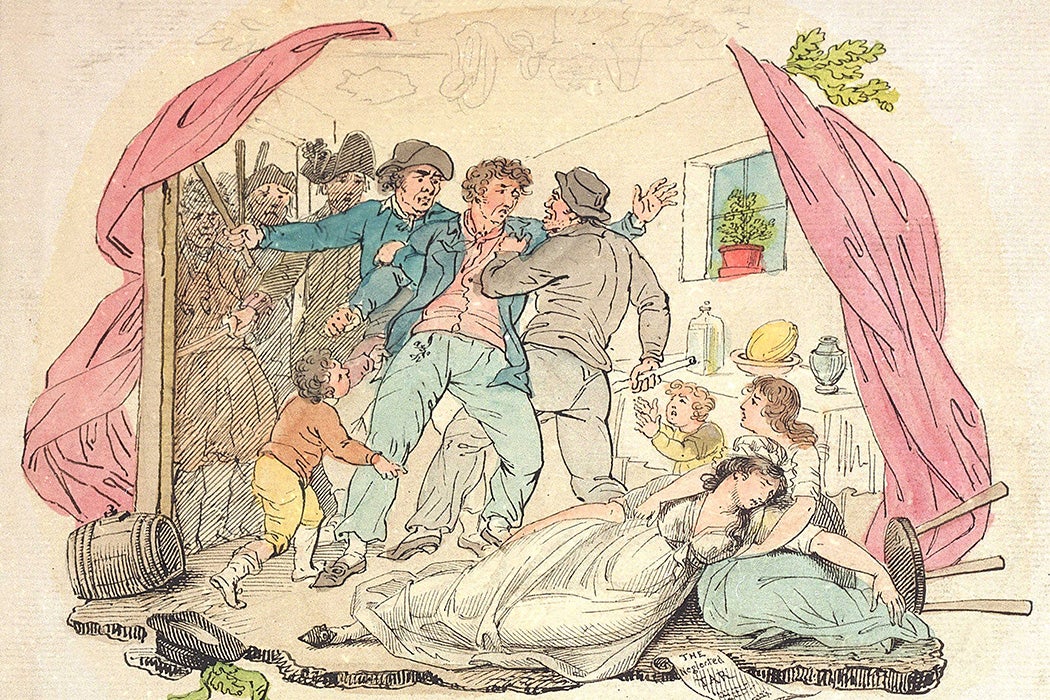On July 4, Americans celebrate liberty and independence from Great Britain. But as historian Christopher P. Magra writes, colonists’ fights for freedom from British dominance began well before 1776. In many cases, the people doing the fighting were in immediate personal danger of losing their own liberty through impressment into the British Royal Navy.
Magra writes that impressment was a kind of military draft that, in practice, looked more like kidnapping. Across the British empire, naval officers seized sailors and forced them into service. “Press gangs” boarded ships, marching their crews off to the physical danger, low pay, and terrible food of the navy. Abusive captains could control their crews by offering those who rebelled up for impressment. One 1740 account from England described a group of sailors who, “having refused to go the Voyage without a Rise of Wages, left their Vessel. Upon which, the Master thereof gave Scent of them to a Press Gang, who, with the Assistance of some Constables, in short, seized them.”
The navy was key to Britain’s dominance of both sides of the Atlantic in the eighteenth century. Military ships established the nation’s power in wars and protected its trading ships and communication networks. And the navy depended on men forced into service. By one count, pressed men made up 40 percent of the 450,000 sailors who served between 1740 and 1815. Magra writes that rebellions against impressment were a long tradition in the British world. In the mid-seventeenth century, English sailors engaged in collective actions against the practice. They insisted that forced military service was a form of “thralldom and bondage,” which they, as “freemen of England,” must resist. Members of the radical group the Levellers compared impressment to the enslavement of Africans and called for the end of both.
These radical ideas traveled around the Atlantic world. In Britain’s American colonies in the mid-eighteenth century, maritime laborers fought off naval officers, sometimes killing them. Sailors from Boston to Virginia formed mobs to resist press gangs, rescued fellow seamen who had been seized, burned naval boats, and, in at least one case, threw British agents into a port jail for the weekend.
Benjamin Franklin and Thomas Paine both attacked impressment in their writing, Magra writes. And the Declaration of Independence specifically called out the British capture of Americans “on the high Seas to bear Arms against their Country.”
Weekly Newsletter
Maritime workers took part in acts of rebellion leading up to the American Revolution. When mobs tarred and feathered British officials, it was with tar used to waterproof ships. In January 1770, thousands of mariners in New York City, organized through the militant group the Sons of Liberty, fought British soldiers in one of the first clashes leading up to war, the Battle of Golden Hill.
Magra concludes that maritime laborers, with their anger at impressment, were a key force in the revolution, “militantly willing to defend freedom against tyranny, the central struggle of what would become the age of revolution.”







